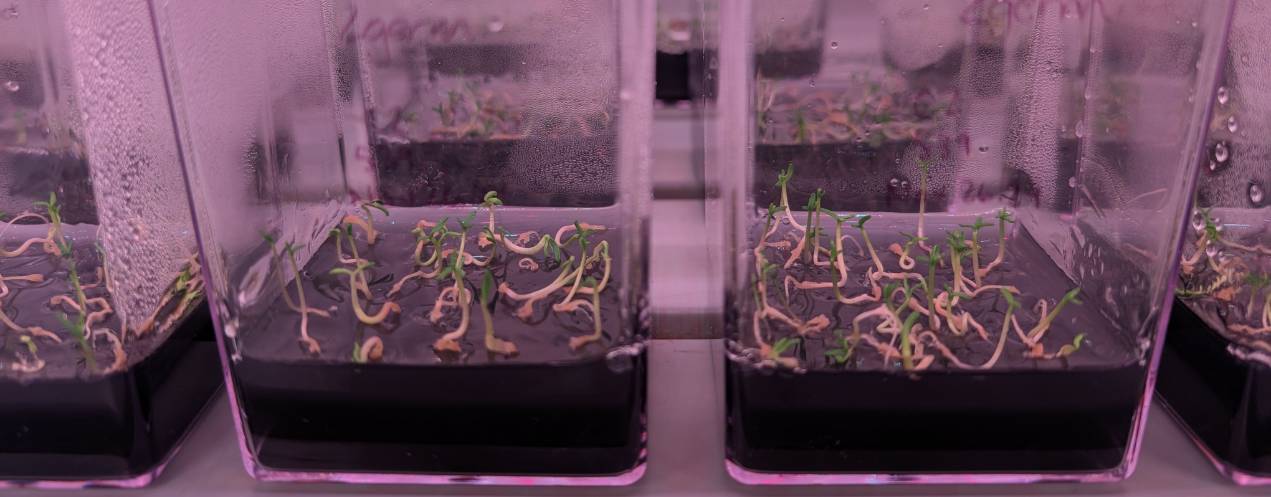Creating a better Christmas tree: Balsam fir tissue culture

Summary
The EATLab, in collaboration with the Christmas Tree Council of Nova Scotia, is using tissue culture and somatic embryogenesis techniques to clonally propagate Balsam Fir with desirable traits such as longer needle retention, later flushing dates and improved aesthetics. Selective breeding is used to identify trees with these traits, and their seed embryos are cultivated on nutrient media to produce undifferentiated plant tissue (callus). This callus is propagated, transferred to media that stimulates embryo growth into seedlings and can be stored long-term via cryopreservation for scalable production. The process enables the creation of many genetically identical seedlings ready for field planting.
Challenge
To meet consumer demand for live Christmas trees in a changing climate, growers require trees with traits like later flushing dates (to avoid spring frost damage), high needle retention and ideal needle colour and length. While tissue culture and somatic embryogenesis offer potential for mass-producing trees with these traits, the techniques require optimization, and additional genetic lines with superior traits need to be developed. Currently, low callus initiation rates limit the number of seedlings that can be produced, highlighting the need for improved methods and a broader selection of genetic lines to deliver trees with diverse, desirable characteristics.
Outcome
Since 2023, more than 50 genetic lines have been added to the collection using a new initiation media, and these lines have been stored for future use using cryopreservation. In 2024, 20 lines started the maturation process (growing embryos), with the intent to have seedlings from all new lines by the end of 2025. We will continue to optimize protocols, and new genetic lines will be added from seeds collected in 2025.
Partners




